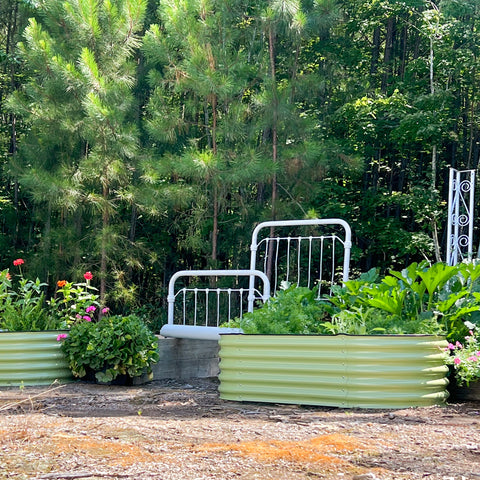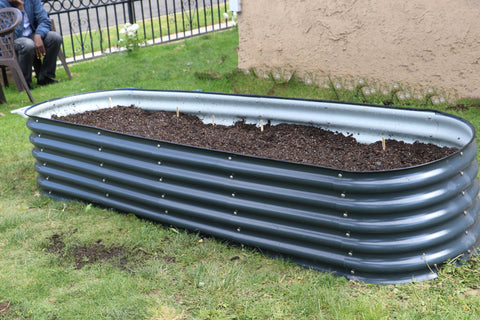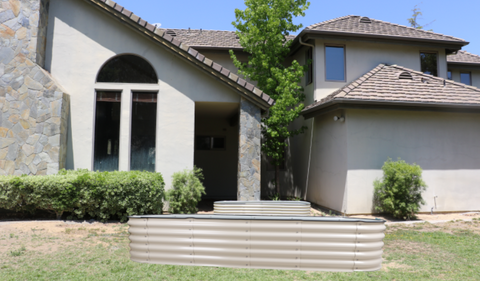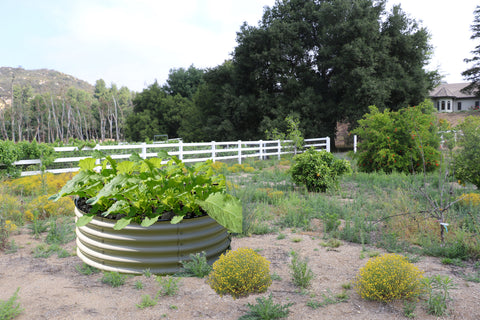Garden Bed Tips: 10 Top Beginners Tips of Gardening
Olle Garden Bed: Wondering how to start a garden? Find your confidence with these professional gardening tips.
1. The location is correct.
Starting a garden, like real estate, is all about location. Put your garden in a yard where you'll see it often (unseen, absent-minded definitely applies to gardening). That way, you'll be more likely to spend time in it.

2. Follow the sun.
Misjudging sunlight is a common pitfall when you're first learning gardening. Before choosing a spot for your garden, pay attention to how the sun shines through your yard. Most edible plants, including many vegetables, herbs, and fruits, require at least 6 hours of sunlight to thrive.
3. Be close to water.
One of the best gardening tips you'll get is planning your new garden near a water source. Make sure you can attach a hose to your garden site so you don't have to pull water over your plant every time it gets thirsty. The best way to tell if a plant needs watering is to push your fingers down an inch into the soil (about a knuckle deep). If it's dry, it's time to water.
4. Start with great soil.
One of the most important pieces of advice when starting a garden is to invest in nutrient-rich and well-draining soil. If you are growing in a raised bed, use the olle garden raised bed, which is the perfect weight and texture for raised bed growing.

5. Consider containers.
When space is at a premium, look for containers. You can grow many plants in pots, including vegetables, herbs, flowers, fruit trees, berries, and shrubs. Here, I recommend the OLLE garden bed, which is like a large pot, but can hold more than a regular pot.
6. Choose the right plants.
It is important to choose plants that match your growing conditions. This means placing sun-loving plants in full sun, choosing heat-tolerant plants in warm climates, and providing plenty of elbow room (or climbing trellis) for ground-devouring vines like squash and melons. Do your homework and pick varieties that grow well where you live and in the space you have.
7. Discover your area.
Knowing your "hardiness zone" can help you choose the best plants. Simply put, it describes the coldest place where a plant can grow. The higher the area code, the warmer the climate. So if a plant is "zone 4 tolerant" and you garden in zone 5, the plant will survive in your yard. But if you're in zone 3, it's too cold to grow that particular plant.

8. Know your frost date.
Planting too early (or too late) for the season can spell disaster for your garden. You need to know the last average spring frost date in your area so you don't accidentally kill your plants by putting them out too soon. It's also good to know your first average fall frost date so you can harvest your plants or move them indoors before late-season cold damages them.
9. Add some mulch.
Apply a layer of mulch 2 to 3 inches deep around each plant. This will help reduce weeds by blocking out the sun and reduce water loss through evaporation, so you must water less. For a polished look, apply a layer of Scotts® Bag Cover. Alternatively, you can lay down straw, chopped leaves, pine grass, or some other locally available material.
10. Feed the plants regularly.
We've discussed the importance of starting with a good soil, but this soil works best when combined with providing your plants with quality nutrients on a regular basis. In other words, amazing soil + top-notch plant food = super garden success!

